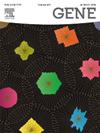
GENE
基因
- 期刊周期:Semimonthly
- 研究方向:生物
- 影響因子:2.638
- 通訊地址:ELSEVIER SCIENCE BV, PO BOX 211, AMSTERDAM, NETHERLANDS, 1000 AE
- 官網(wǎng):http://www.elsevier.com/wps/find/journaldescription.cws_home/506033/description#description
- 投稿地址:http://ees.elsevier.com/gene/
- 審稿速度:平均2.0月
中文簡介
Gene擁有一個(gè)開放獲取的鏡像期刊Gene: X,目標(biāo)和范圍相同,編輯團(tuán)隊(duì),投稿系統(tǒng),嚴(yán)格的同行評審。Gene發(fā)表的論文關(guān)注于基因在所有生物環(huán)境中的調(diào)控、表達(dá)、功能和進(jìn)化,包括所有原核生物、真核生物以及病毒。Gene致力于成為一個(gè)非常多樣化的期刊,并將考慮出版各個(gè)領(lǐng)域的主題。雖然不限于下列各項(xiàng),但一些一般性主題包括:?DNA組織、復(fù)制與進(jìn)化-專注于基因組DNA(染色體組織、比較基因組學(xué)、DNA復(fù)制、DNA修復(fù)、移動(dòng)DNA、線粒體DNA、葉綠體DNA)。?表達(dá)與功能-專注于功能rna (microRNAs, tRNAs, rRNAs, mRNA剪接,選擇性聚腺苷酸化)?調(diào)節(jié)-專注于介導(dǎo)基因讀出的過程(表觀遺傳學(xué)、染色質(zhì)、組蛋白編碼、轉(zhuǎn)錄、翻譯、蛋白質(zhì)降解)。?細(xì)胞信號-專注于控制信息流入細(xì)胞核以控制基因表達(dá)的機(jī)制(由細(xì)胞外配體、Wnt、Notch、TGFbeta/BMPs、FGFs、IGFs等控制的激酶和磷酸酶通路)。?基因表達(dá)和遺傳變異的分析-專注于高通量方法(如DeepSeq、ChIP-Seq、Affymetrix微陣列、蛋白質(zhì)組學(xué)),這些方法定義了基因調(diào)控回路、分子通路和蛋白質(zhì)/蛋白質(zhì)網(wǎng)絡(luò)。?遺傳學(xué)——關(guān)注模型生物(如小鼠、青蛙、果蠅、蠕蟲)、人類遺傳變異、群體遺傳學(xué)以及農(nóng)業(yè)和獸醫(yī)遺傳學(xué)的發(fā)展。?分子病理學(xué)和再生醫(yī)學(xué)-專注于人類疾病的分子過程的解除管制,以及通過多能或多能干細(xì)胞支持組織再生的機(jī)制。Gene鼓勵(lì)提交具有合理分析水平、功能相關(guān)性和/或機(jī)械洞察力的小說手稿。Gene也歡迎那些主要具有描述性成分,但為后續(xù)功能研究改善了基本知識基礎(chǔ),或?qū)ψ罱l(fā)表的發(fā)現(xiàn)提供了重要證實(shí)的論文。驗(yàn)收的主要標(biāo)準(zhǔn)是作品的原創(chuàng)性和科學(xué)性。《華爾街日報(bào)》認(rèn)識到,新穎性的標(biāo)準(zhǔn)是武斷的,因?qū)W科和地理位置而異,也會隨著時(shí)間而變化。該雜志將與編輯、評審和作者合作,促進(jìn)論文的修訂,以確保被接受的論文相對于同一領(lǐng)域內(nèi)同時(shí)提交的論文來說是合理完整和有競爭力的。
英文簡介
Gene has an open access mirror journal Gene: X, sharing the same aims and scope, editorial team, submission system and rigorous peer review.Gene publishes papers that focus on the regulation, expression, function and evolution of genes in all biological contexts, including all prokaryotic and eukaryotic organisms, as well as viruses.Gene strives to be a very diverse journal and topics in all fields will be considered for publication. Although not limited to the following, some general topics include:? DNA Organization, Replication & Evolution -Focus on genomic DNA (chromosomal organization, comparative genomics, DNA replication, DNA repair, mobile DNA, mitochondrial DNA, chloroplast DNA).? Expression & Function - Focus on functional RNAs (microRNAs, tRNAs, rRNAs, mRNA splicing, alternative polyadenylation) ? Regulation - Focus on processes that mediate gene-read out (epigenetics, chromatin, histone code, transcription, translation, protein degradation). ? Cell Signaling - Focus on mechanisms that control information flow into the nucleus to control gene expression (kinase and phosphatase pathways controlled by extra-cellular ligands, Wnt, Notch, TGFbeta/BMPs, FGFs, IGFs etc.) ? Profiling of gene expression and genetic variation - Focus on high throughput approaches (e.g., DeepSeq, ChIP-Seq, Affymetrix microarrays, proteomics) that define gene regulatory circuitry, molecular pathways and protein/protein networks. ? Genetics - Focus on development in model organisms (e.g., mouse, frog, fruit fly, worm), human genetic variation, population genetics, as well as agricultural and veterinary genetics. ? Molecular Pathology & Regenerative Medicine - Focus on the deregulation of molecular processes in human diseases and mechanisms supporting regeneration of tissues through pluripotent or multipotent stem cells.Gene encourages submission of novel manuscripts that present a reasonable level of analysis, functional relevance and/or mechanistic insight. Gene also welcomes papers that have predominantly a descriptive component but improve the essential basis of knowledge for subsequent functional studies, or provide important confirmation of recently published discoveries.The primary criteria for acceptance are that the work is original and scientifically sound. The journal appreciates that standards of novelty are arbitrary, differ among disciplines and geographic locations, as well as change with time. In partnership with Editors, Referees and Authors, the journal will promote the revision of papers to ensure that accepted papers are reasonably complete and competitive with concurrent submissions in a given field.
近年期刊自引率趨勢圖
JCR分區(qū)
| JCR分區(qū)等級 | JCR所屬學(xué)科 | 分區(qū) | 影響因子 |
| Q2 | GENETICS & HEREDITY | Q2 | 3.913 |
近年期刊影響因子趨勢圖
CiteScore數(shù)值
| CiteScore | SJR | SNIP | 學(xué)科類別 | 分區(qū) | 排名 | 百分位 |
| 7.00 | 0.719 | 0.933 | 大類:Biochemistry, Genetics and Molecular Biology 小類:Genetics | Q2 | 88 / 335 |
73% |
相關(guān)生物SCI期刊推薦
- MonthlyINTERNATIONAL JOURNAL OF BIOLOGICAL MACROMOLECULES
- Frontiers in Genetics
- BimonthlyMolecular Plant
- BimonthlyBRIEFINGS IN BIOINFORMATICS
- Frontiers in Microbiology
- BimonthlyCELLULAR AND MOLECULAR BIOLOGY
- SemimonthlyCELLULAR AND MOLECULAR LIFE SCIENCES
- Frontiers in Plant Science
- MonthlyJournal of Genetics and Genomics
- MonthlyMOLECULAR BIOLOGY AND EVOLUTION
